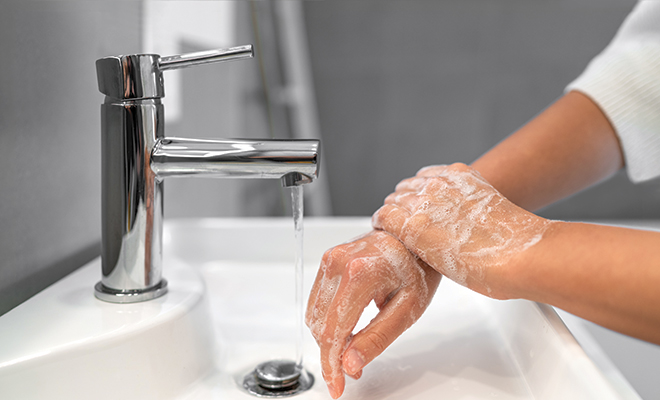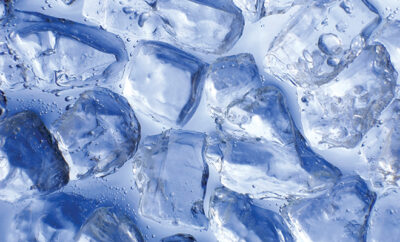
Hand Hygiene 101
Times are tumultuous. COVID-19 has wreaked havoc on our old way of life, and the new ways are just that: new. Although we’re hesitant in how to move forward in these uncharted waters, experts are certain of one thing—the power of handwashing. Getting our hands completely clean is crucial to giving viruses the least possible chance of messing with our lives.
Handwashing is easy, right? But while we might think we’re flawless when it comes to cleaning our paws, we might want to take caution with our own technique. Chances are, if you’re reading this, you’re not doing it right anyway, at least not all the time.
Let’s take matters into our own hands and get the facts.
In a 2013 Michigan State University study completed in public bathrooms, trained observers inconspicuously checked out the handwashing skills of more than 3,700 people. Results indicated that only about 5 percent of the bathroom guests actually washed their hands properly. The most common shortcoming for people was time. Only 5 percent spent more than 15 seconds washing, rubbing and rinsing their hands.
Perhaps more shocking (and frightening) was that approximately one in four people just wetted their hands and didn’t even use soap. Researches named this move the “splash and dash” for obvious reasons. But this was, by far, better than the one in ten people who did not wash their hands at all.
Corona Control
When it comes to keeping the COVID-19 virus, or any sickness, at bay, some things are just outside our control, such as what others touch, but our own hands are a different story. We can care for our hands, choose where they are placed and decide how clean we keep them.
According to the Centers for Disease Control, for most people, such as those who aren’t in the medical field, handwashing should be the primary mode of hand hygiene. Hand sanitizers, made properly with the correct ingredients, also are effective but should be used only when soap and clean water are not available.
Why the Wash?
Handwashing works double duty for our precious paws. When we wash with soap and water, we are physically removing things from our hands. At the same time, the soap is actually busting open certain germs or agents and breaking them apart, as long as we do things correctly.
Germs and Washing: Are You Killin’ It?
We may have strayed from the handwashing etiquette that we learned as toddlers. So, what are the proper steps to disinfect our mitts? Experts say, “Get down and dirty.”
1. Wet your hands with clean running water, warm or cold, and apply soap.
2. Rub your hands together, lathering up with soap.
3. Scrub all surfaces of your hands, including the palms, backs, fingers, between your fingers, and under your nails. Keep scrubbing for at least 20 seconds. Need a little help with timing? Sing the “Happy Birthday” song twice.
4. Rinse your hands under clean, running water.
5. Completely dry your hands using a clean towel or air dry them.
When to Cleanse
We are more likely to spread our germs at certain times. Here are key situations when scrub-a-dub-dubbing is super important.
Before: Eating food, caring for a sick person, treating a cut or wound
During: Cooking
After: Using the toilet, changing a diaper or helping someone use the toilet; blowing your nose, coughing or sneezing; touching animals, handling pet food; touching trash
How to Sanitize Hands
The CDC says that washing with soap and water is the best way to sanitize hands, but if soap and water aren’t available, hand sanitizer with at least 60 percent alcohol is the second-best option. Thoroughly covering hands with sanitizer and letting dry can quickly reduce the number of germs milling about the hands and eliminate some chemicals. However, not all germs and chemicals are eradicated with sanitizer, so washing hands as soon as possible will be helpful in any situation.
The Gender Gap
Ladies, after years of observation and research, experts have found that women are more likely to wash their hands, use soap and scrub for a longer period of time than men after using the restroom. In one study published by the American Journal of Infection Control, female medical staff in critical care units washed their hands significantly more than their male coworkers after contact with patients. Here’s hoping your doctor uses healthy hand hygiene.
All Hands on Deck!
As life moves forward, it’s best to take matters into our own hands. Keeping them clean is considered one of the most important steps we can take to avoid getting sick and spreading germs to those around us. Although washing our hands is simple, it’s not trivial. Moving forward, being diligent is the most important task we will have, hands down! ■
Sources: cdc.gov and reuters.com.







